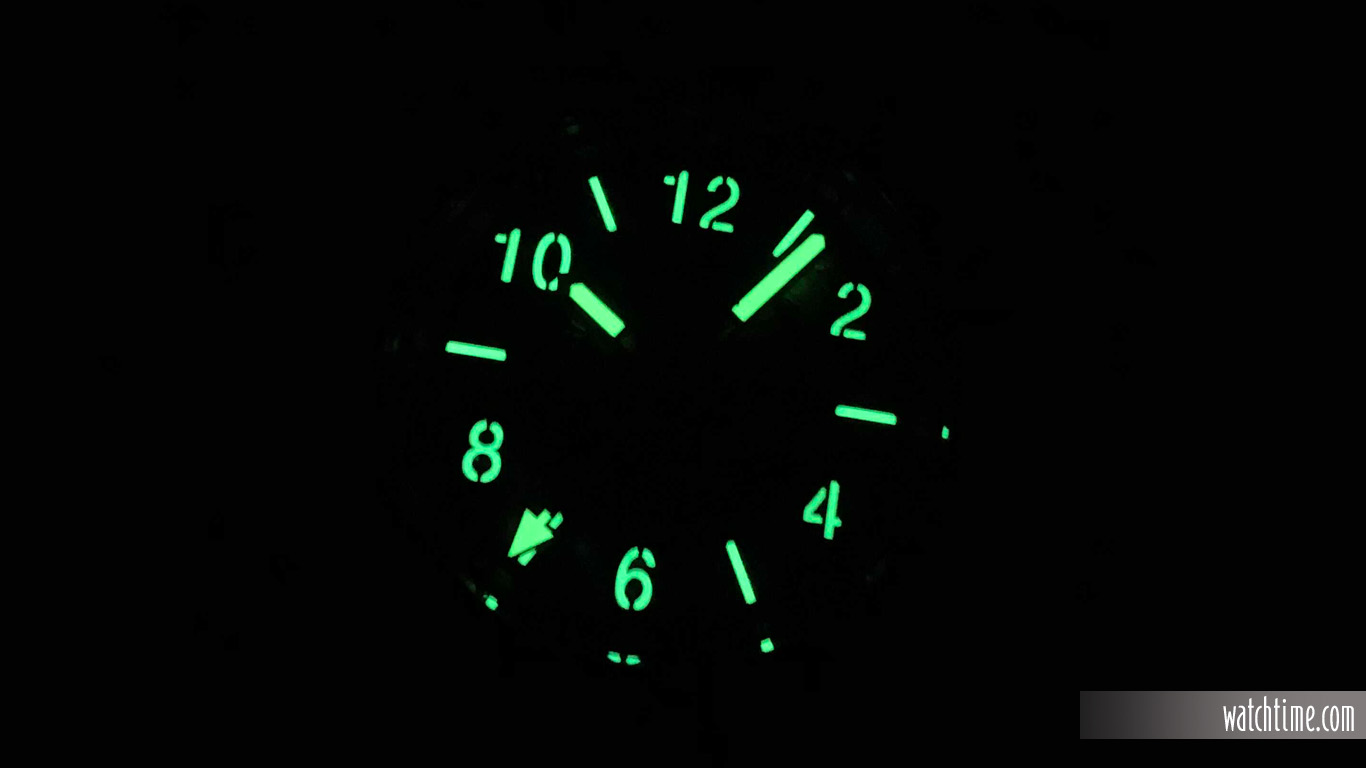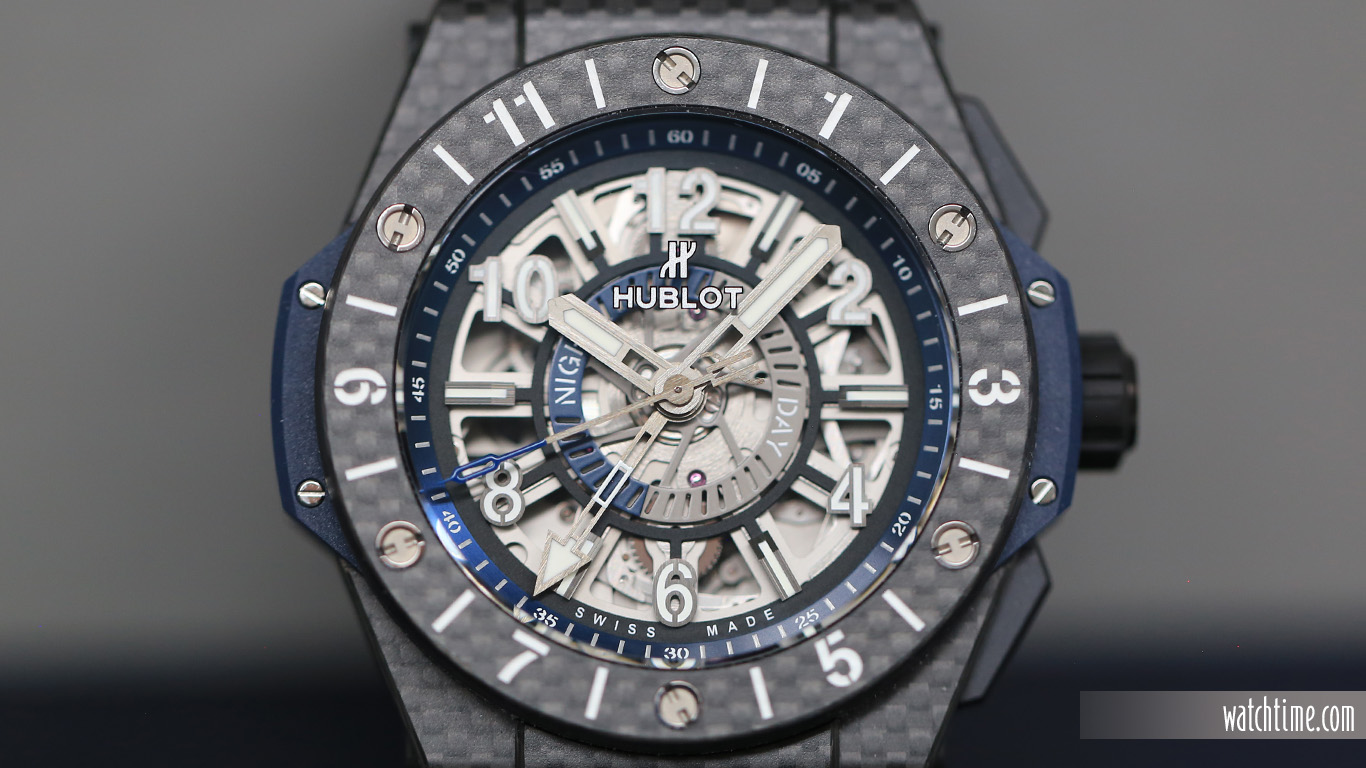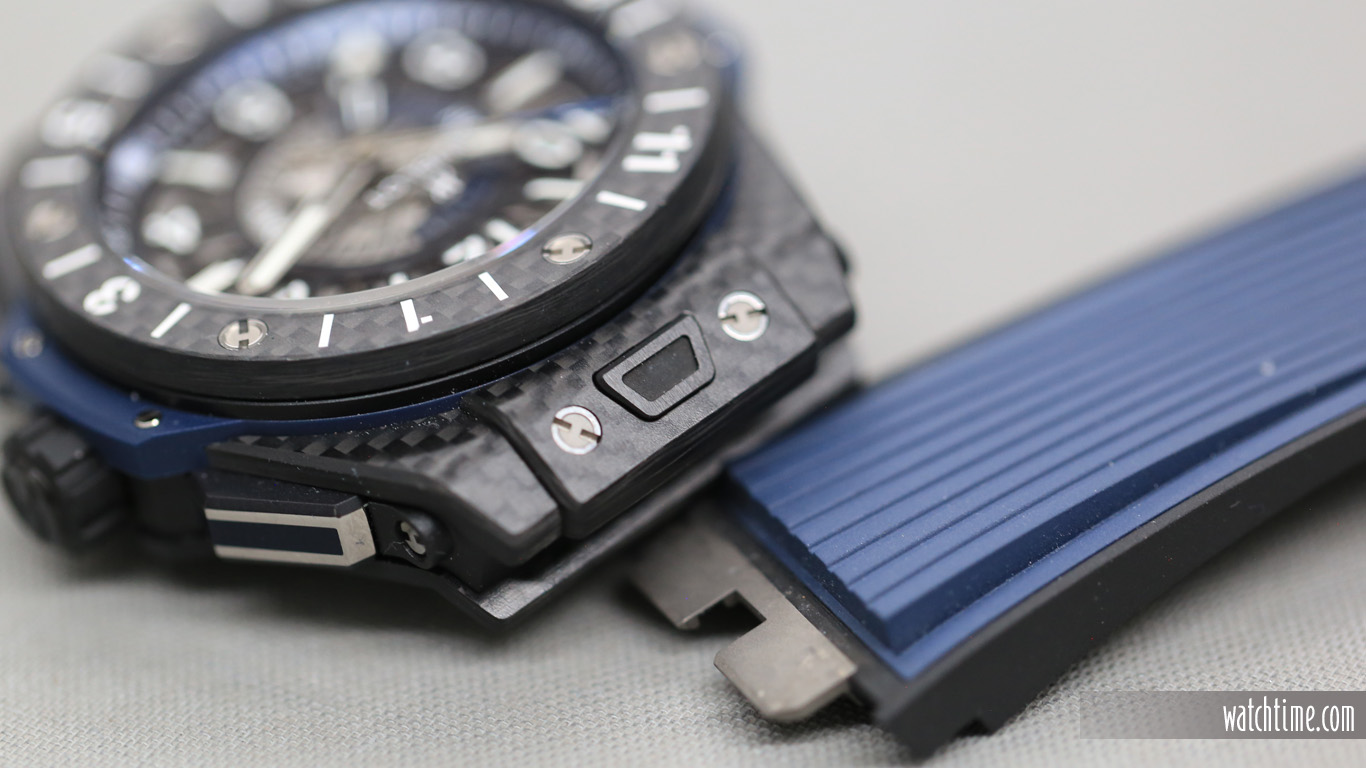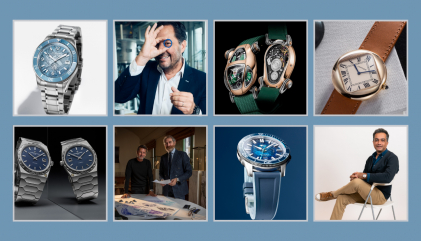When we think of Hublot, we tend to picture ruggedly stylish chronographs, avant-garde materials in eye-catching colour combos, and sporty design influences ranging from soccer to motor racing. Rarely do we think of classical dual-time functionality, and that’s a shame because Hublot’s Big Bang Unico GMT models — introduced in 2017 in titanium and carbon fibre-cased editions, and joined by King Gold and ceramic versions this year — represent a distinctly masculine, eminently legible, and user-friendly take on this classical “practical” complication. Here’s a hands-on look at the Big Bang Unico GMT Carbon model, on which I tracked my overflowing appointment calendar at Baselworld 2019 while keeping track of the time back home.
Even without the flagship chronograph model’s busy, tricompax face, the watch is immediately recognisable as a Big Bang, sporting an unapologetically large 45-mm case, constructed of carbon fibre, a material long associated with Hublot and its “art of fusion” design ethos. The material makes the thick case (15.85 mm) quite sturdy and yet pleasantly lightweight. The round, stationary carbon fibre bezel is anchored firmly to the octagonal case middle by the Nyon-based brand’s signature H-shaped screws — six of them, to be exact, representing the hour points at 12, 2, 4, 6, 8, and 10 o’clock. The other hour markers on the bezel, on which a central arrow-tipped hand indicates a traveler’s home or reference time, are stencil-style Arabic numerals and half-hour indices filled with white lacquer for an excellent contrast with the dark checkerboard pattern of the carbon fibre base. The flange of the bezel, with a white printed minutes scale, is made of blue composite resin, another favourite material of Hublot and one that lends an attractive blue highlight to the ensemble, matching the thick rubber strap, the “Night” sector on the dial’s central day-night indicator, and the protruding, blue-resin lateral inserts, sandwiched between the bezel and case middle and held by titanium screws.
The Arabic hour numerals missing on the bezel are used as the principal markers on the dial, which is open-worked in the now-recognisable style of other Unico-equipped watches. Big, bold, eminently legible and filled with Super-LumiNova, these numerals alternate with thick bar indices for the main time display i.e., the current time in one’s location away from home, which is displayed by thick, partly skeletonised and luminous-filled pentagon-shaped hands. The running seconds tick away via a very thin, blue-lacquered central hand, whose counterweight is shaped like a Hublot “H” and whose tip elegantly glides past the indices on the blue inner scale.
While the Big Bang Unico GMT is not a chronograph, it does have some chronograph DNA, and it is the inclusion of chronograph-type functionality that makes it so easy and intuitive to operate. Simply unscrew and pull out the rubber-coated, H-branded crown and set all three main hands — hour, minute, and GMT hand — to the correct local time. When changing time zones — as I did, from New York (EST) to Basel (CET) — simply push the pedal-like chrono-style pushers to move the local-time hour hand in one-hour increments in either direction while the minute hand and seconds hand remain unaffected. Because the gears for the minutes and seconds are not driven, it is not necessary to synchronise all of the hands with every change of time zone. Longtime fans of the Hublot brand may note that the rectangular shape of the GMT pushers resembles those of early Big Bang chronographs, thus differentiating them from the more button-like rounded pushers of modern Big Bang Unico models. Hublot has built a safety device into the mechanism preventing simultaneous activation of the two pushers.
Following the very intuitive design codes, the pusher at 2 o’clock moves the hand forward an hour, while the one at 4 o’clock moves it backward a hour. In a matter of moments, the triangle-tipped, luminous GMT hand will continue to point to the home time on the 12-hour bezel, while the main hour and minute hand will be set to the local time. If in a few days you are flying from, say, Basel to Tokyo, just click the pusher again until the hour hand moves to that city’s local time. Best of all for jet-lagged wearers who may not want to do the math required of a more standard 24-hour GMT timekeeper, the dial’s day-night indicator allows one to see at a glance whether your home time is in AM or PM time. Divided into blue for night (matching the strap and the flange) and light grey for day (playing off the colours of the exposed Unico movement and the case’s carbon fibre pattern) — and, to make it even more idiot-proof, labeled as such also — this disk moves along with the hands, allowing a quick “day or night” reference for the home time.
The in-house-manufactured engine for all this ease of use is Hublot’s Calibre HUB1251 Unico, self-winding by means of a skeletonised rotor and amassing a power reserve of 72 hours. It is ensconced behind a carbon fibre caseback held fast by titanium screws and fitted with a sapphire window. The movement’s base, of course, is Hublot’s original Unico calibre, which has had its integrated chronograph components, including the column wheel, stripped out (as well as the typical skeletonised date disk, another addition by subtraction to keep the watch’s two time zone displays as simple as possible) and a patented, proprietary GMT module added. Perusing its micromechanical expanses with a loupe, one notes the matte finishing on the skeletonised, micro-blasted bridges, the balance oscillating at a speedy 28,800 vph, and the bidirectionally swinging, blade-edged rotor, running on ceramic ball bearings, which can be not only seen but heard while doing its work: hold the watch up to your ear, gently shake your wrist, and listen to the metallic rasps of the movement’s mechanical pulse.
As with many modern Hublot watches, the lugs, also crafted from carbon fibre, are integrated tightly into the structured rubber strap, which is deep blue in color and grooved like a race car’s tires. Both the lugs and strap are designed in Hublot’s “One-Click” easy-change style, which allows for swapping out of straps at the simple push of a button — though the midnight blue strap that comes with this model is so perfect for it, I am not sure why anyone would feel the need to change it; perhaps a black rubber or dark grey version would work, though even these would leave the blue elements on the dial looking somewhat isolated and out of place. The watch securely fastens to the wrist with a double-folding titanium clasp with push-buttons, whose audible click assures the wearer that it’s locked and loaded for a day’s work. If you’re looking for something understated to slip under your shirt cuff until it’s needed, this is not the timepiece — nor, let’s face it, the brand — for you. But if you want a reliable travel companion that offers a rare combination of user-friendly features — easy to read two time zones at once, easy to change time zones, easy to change straps, and enough power reserve that you shouldn’t need to worry about winding or re-setting it during most business trips — the Big Bang Unico GMT Carbon (retail price: $23,100 or Rs. 1.6 lakh approx.) makes a compelling case to join you on your next sojourn.





















![Ulysse Nardin Diver [AIR]](https://img.watchtime.in/images/Article/2025/April/ulysse_nardin_diver_%5Bair%5D_174361133867ed65ca95ff4.png)


